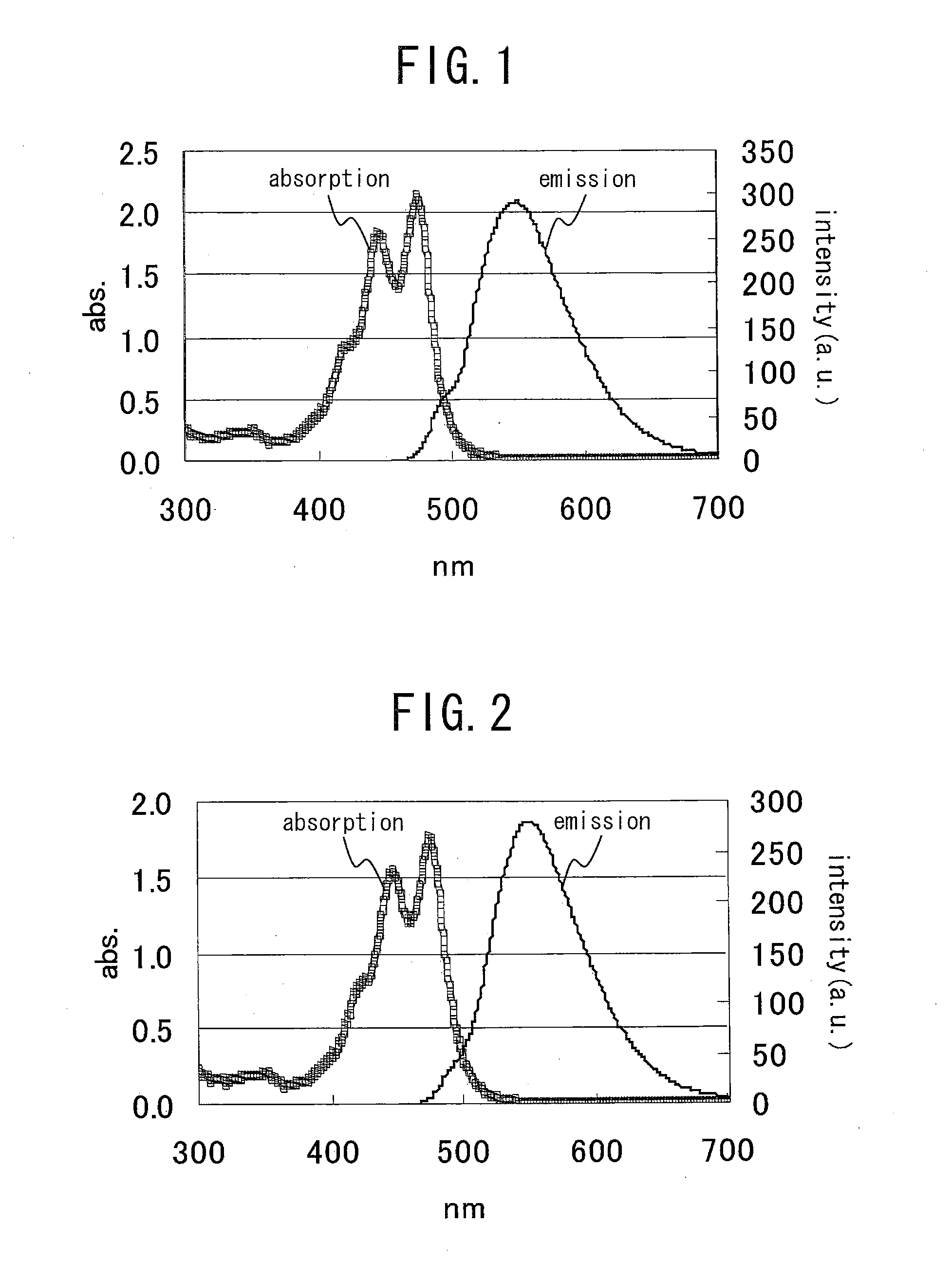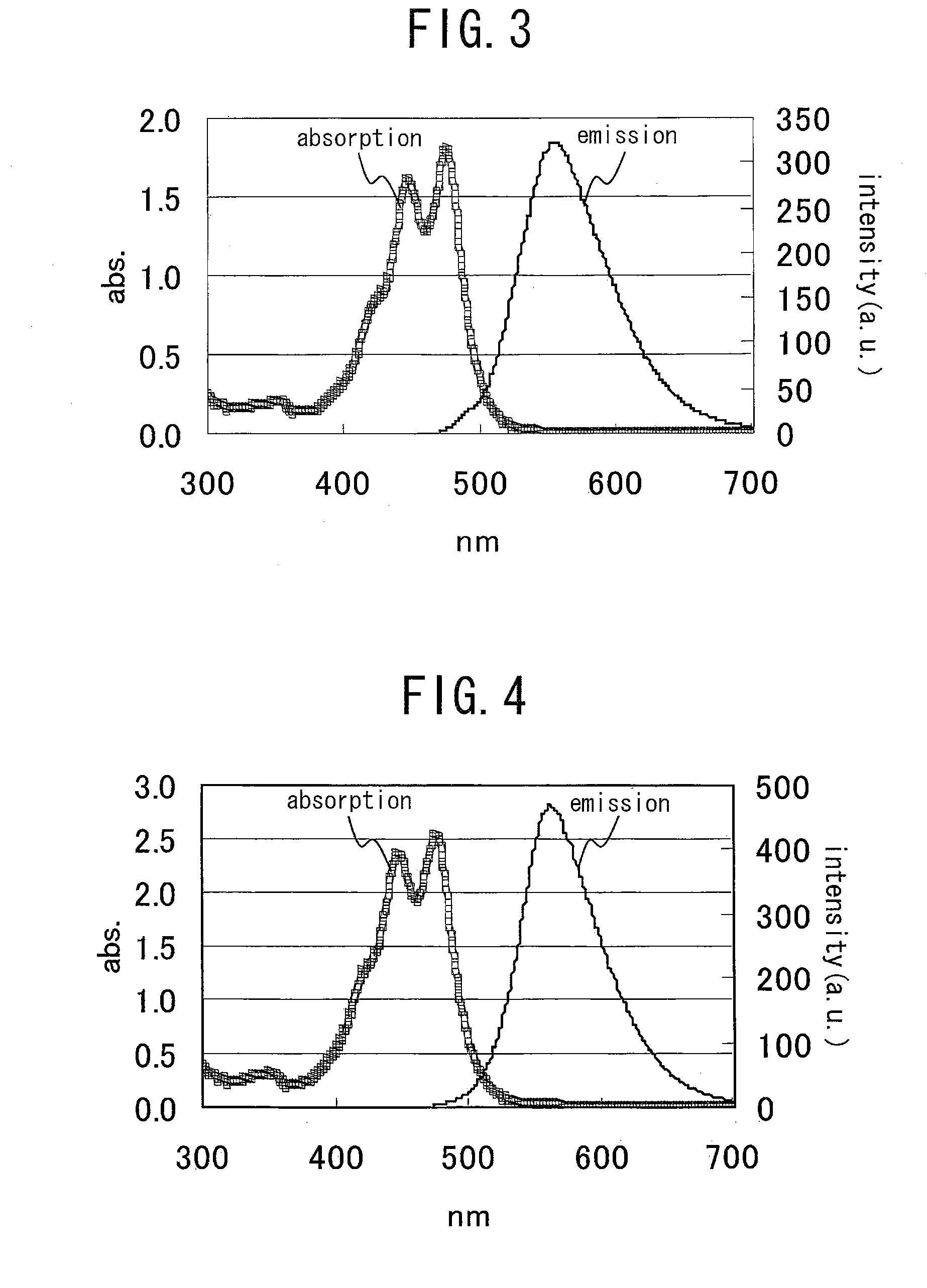Methods for controlling optical property of wavelength conversion sheet and for producing wavelength conversion sheet, wavelength conversion sheet for cadmium telluride solar cell, and cadmium telluride solar cell
a technology of cadmium telluride and wavelength conversion, which is applied in the direction of luminescent compositions, lighting and heating apparatus, and methods for producing wavelength conversion sheets. it can solve the problems of low reabsorption efficiency, inability to achieve the optimization of emission wavelength range using a certain phosphor, and inability to practice wavelength conversion technology. achieve low reabsorption, high emission efficiency, and easy production
- Summary
- Abstract
- Description
- Claims
- Application Information
AI Technical Summary
Benefits of technology
Problems solved by technology
Method used
Image
Examples
example 1
[0048]A 26% by weight transparent resin solution was prepared by solving a polymethylmethacrylate resin (PMMA) (produced by KURARAY CO., LTD., product name “PARAPET EH-1000P”) in toluene. Next, “LUMOGEN F Yellow 083” (fluorescent dye produced by BASF Corporation) was used as a phosphor, and a phosphor solution was prepared by solving 0.3 g of the phosphor in 9.7 g of methylene chloride. It is noted that a molecule of this phosphor has a cyano group. A varnish containing 0.7% by weight phosphor to the PMMA was prepared by mixing 10 g of the transparent resin solution and 0.61 g of the phosphor solution. This varnish was applied on a PET separator and dried at 90° C. for 15 minutes. Thus, the wavelength conversion sheet for a cadmium telluride solar cell with a thickness of 48 μm was produced.
example 2
[0049]A varnish containing 1% by weight phosphor to the PMMA was prepared by mixing 10 g of the transparent resin solution prepared in the same manner as Example 1 and 0.87 g of phosphor solution prepared in the same manner as Example 1. This varnish was applied on a PET separator and dried at 90° C. for 15 minutes. Thus, the wavelength conversion sheet for a cadmium telluride solar cell with a thickness of 25 μm was produced.
example 3
[0050]A varnish containing 1.5% by weight phosphor to the PMMA was prepared by mixing 10 g of the transparent resin solution prepared in the same manner as Example 1 and 1.30 g of phosphor solution prepared in the same manner as Example 1. This varnish was applied on a PET separator and dried at 90° C. for 15 minutes. Thus, the wavelength conversion sheet for a cadmium telluride solar cell with a thickness of 19 μm was produced.
PUM
| Property | Measurement | Unit |
|---|---|---|
| thickness | aaaaa | aaaaa |
| light transmittance | aaaaa | aaaaa |
| transparent | aaaaa | aaaaa |
Abstract
Description
Claims
Application Information
 Login to View More
Login to View More - R&D
- Intellectual Property
- Life Sciences
- Materials
- Tech Scout
- Unparalleled Data Quality
- Higher Quality Content
- 60% Fewer Hallucinations
Browse by: Latest US Patents, China's latest patents, Technical Efficacy Thesaurus, Application Domain, Technology Topic, Popular Technical Reports.
© 2025 PatSnap. All rights reserved.Legal|Privacy policy|Modern Slavery Act Transparency Statement|Sitemap|About US| Contact US: help@patsnap.com



